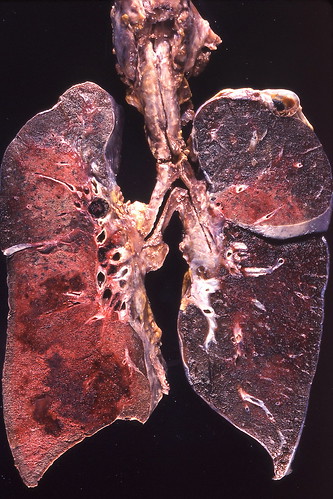 Recombinomics | The symptoms are observed at different stages of disease - a fever with a temperature over 38 C, cough, respiratory disorders. When cough was characterized by negligible allocation phlegm or dry unproductive cough with blotches of blood. All the patients come to hospital on average by 3-7 days of onset, were in serious condition. Period of time from onset to death averaged from 4 to 7 days. In all patients during a hospital for signs of respiratory insufficiency of various degrees, which quickly rose and manifested accelerated respiration rate, shortness of breath and effectiveness of independent breathing. X-ray studies were performed on 1-2 day hospitalization. Most patients experienced a double-headed particles of lower lung lesion, followed by a trend towards total destruction.
Recombinomics | The symptoms are observed at different stages of disease - a fever with a temperature over 38 C, cough, respiratory disorders. When cough was characterized by negligible allocation phlegm or dry unproductive cough with blotches of blood. All the patients come to hospital on average by 3-7 days of onset, were in serious condition. Period of time from onset to death averaged from 4 to 7 days. In all patients during a hospital for signs of respiratory insufficiency of various degrees, which quickly rose and manifested accelerated respiration rate, shortness of breath and effectiveness of independent breathing. X-ray studies were performed on 1-2 day hospitalization. Most patients experienced a double-headed particles of lower lung lesion, followed by a trend towards total destruction.The above translation is from an announcement today from the Ukraine Ministry of Health describe 90 fatalities (see map) associated with community acquired pneumonia. The full report included the age distribution, which exactly match distribution reported previously by other countries for swine H1N1. 52/90 fatalities were in the age group of 19-40, followed by 26/90 in the 41-55 age group.
Coughing up blood followed the "total destruction" of lungs again gives a clinical picture of hemorrhagic pneumonia caused by H1N1 swine flu.
However, although the 90 recent fatalities described above are clearly due to H1N1, many reports continue to cite a low number of H1N1 lab confirmed cases, which is more reflective of limited testing than actual cases.
Earlier reports cited pneumonia deaths not associated with the influenza/ARI category and the basis for the classification of approximately half of such deaths into a separate category remains unclear.
The above description of these fatalities increase the need for the immediate release of sequences from H1N1 isolated from the lungs of these fatal cases.
Samples were sent to Mill Hill a week ago and only a minimal description (no "large" changes and no anti-viral resistance) of the sequence data. As the number of reports of sequences with receptor binding domain changes in isolates from lungs of fatal H1N1 cases increase, the need for full and rapid disclosure of sequences from large outbreaks such as the one in Ukraine become a major health care imperative.


0 comments:
Post a Comment